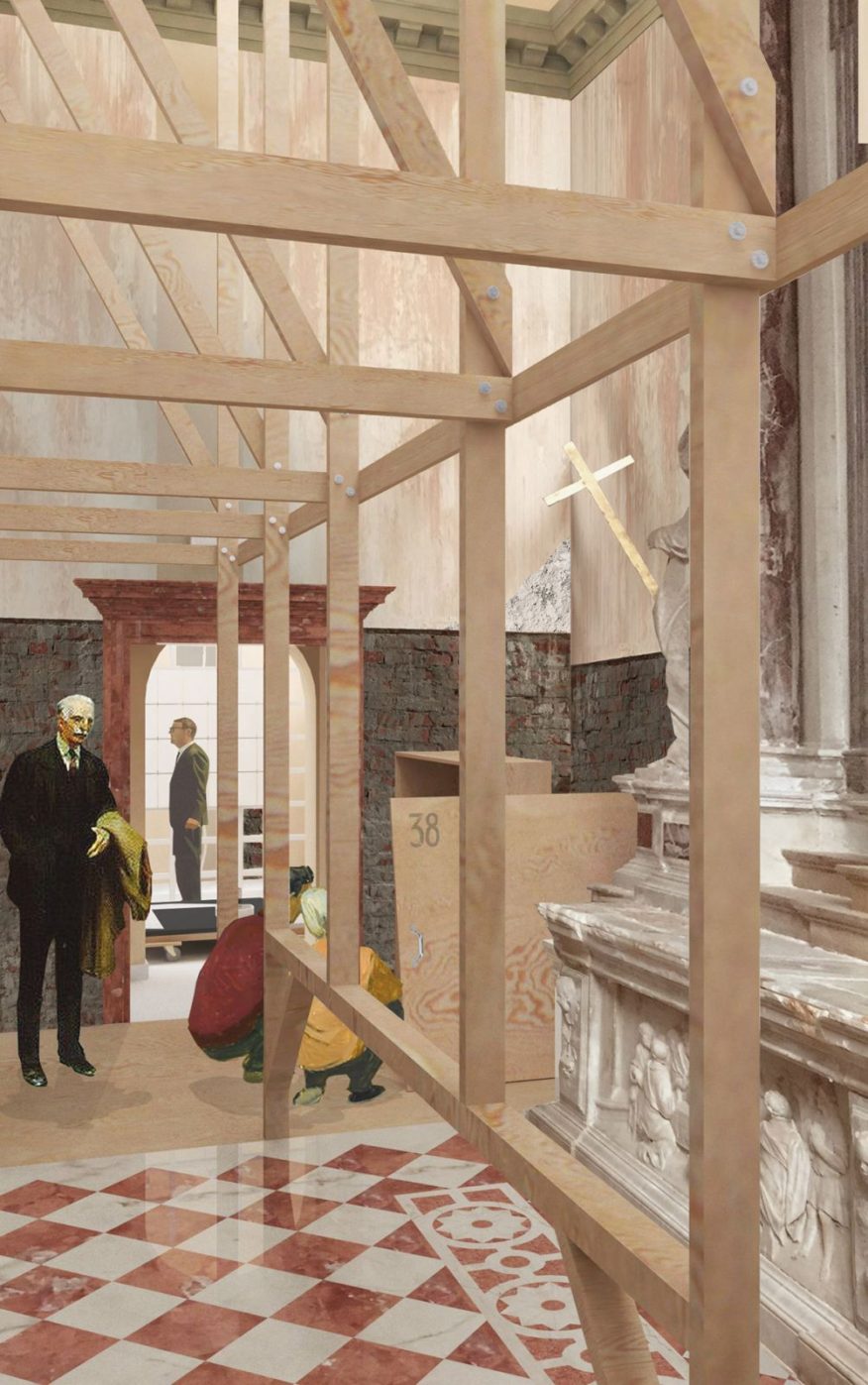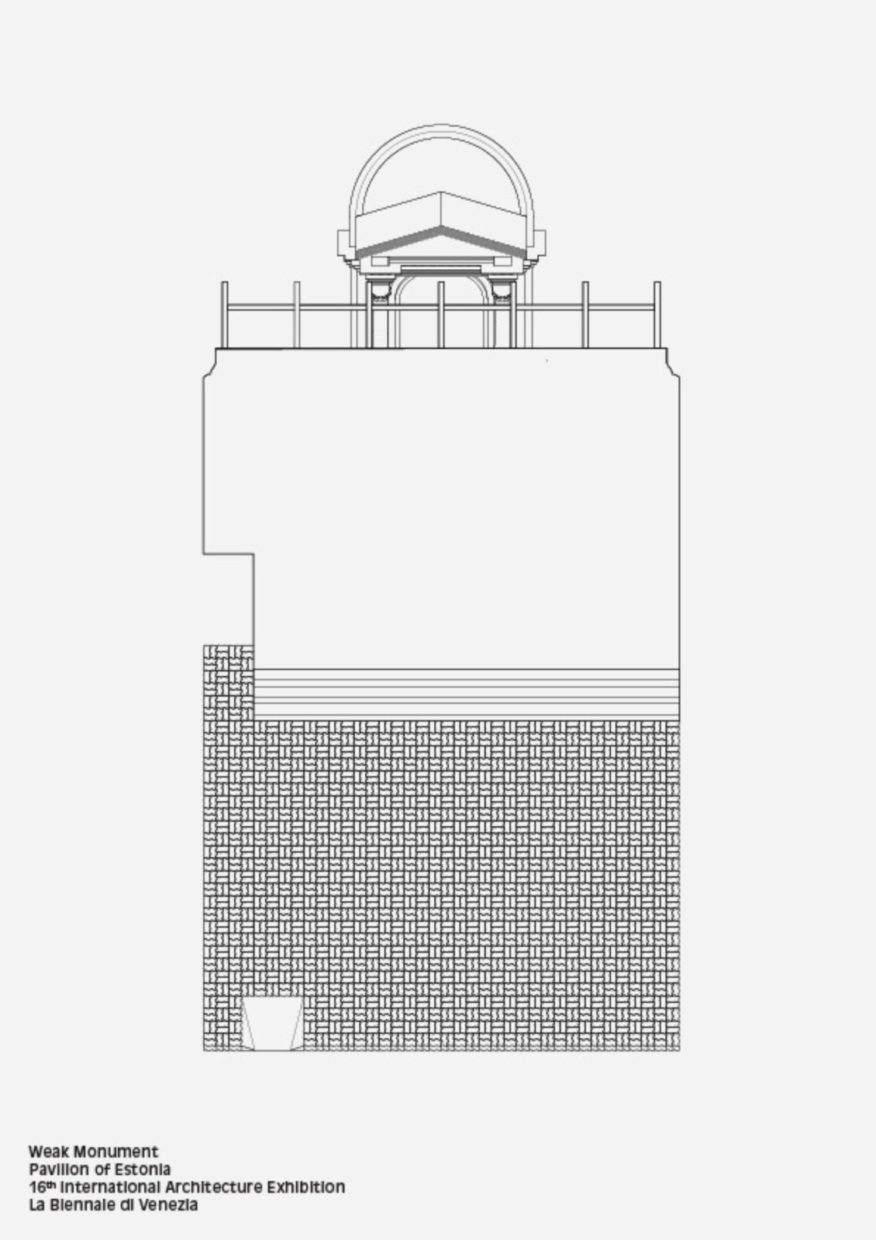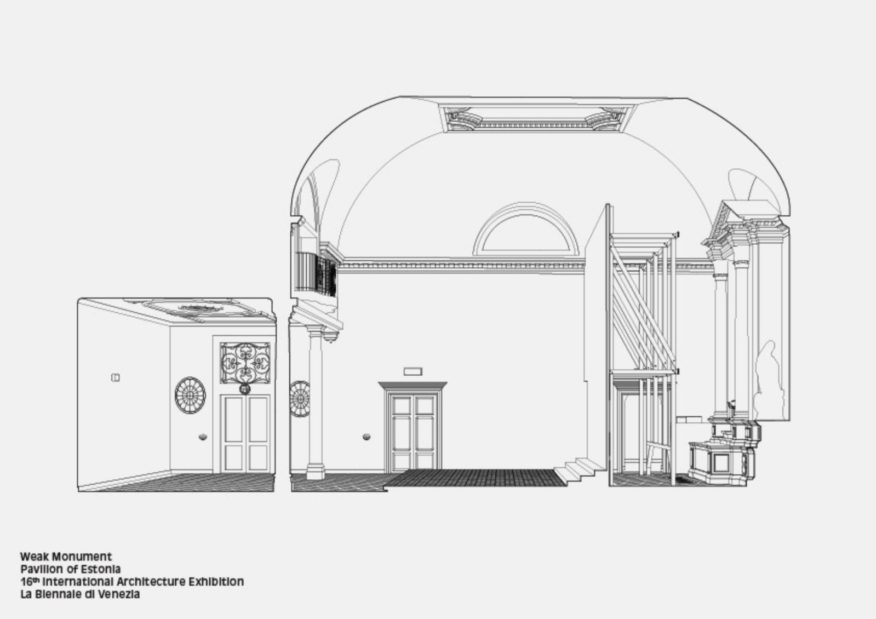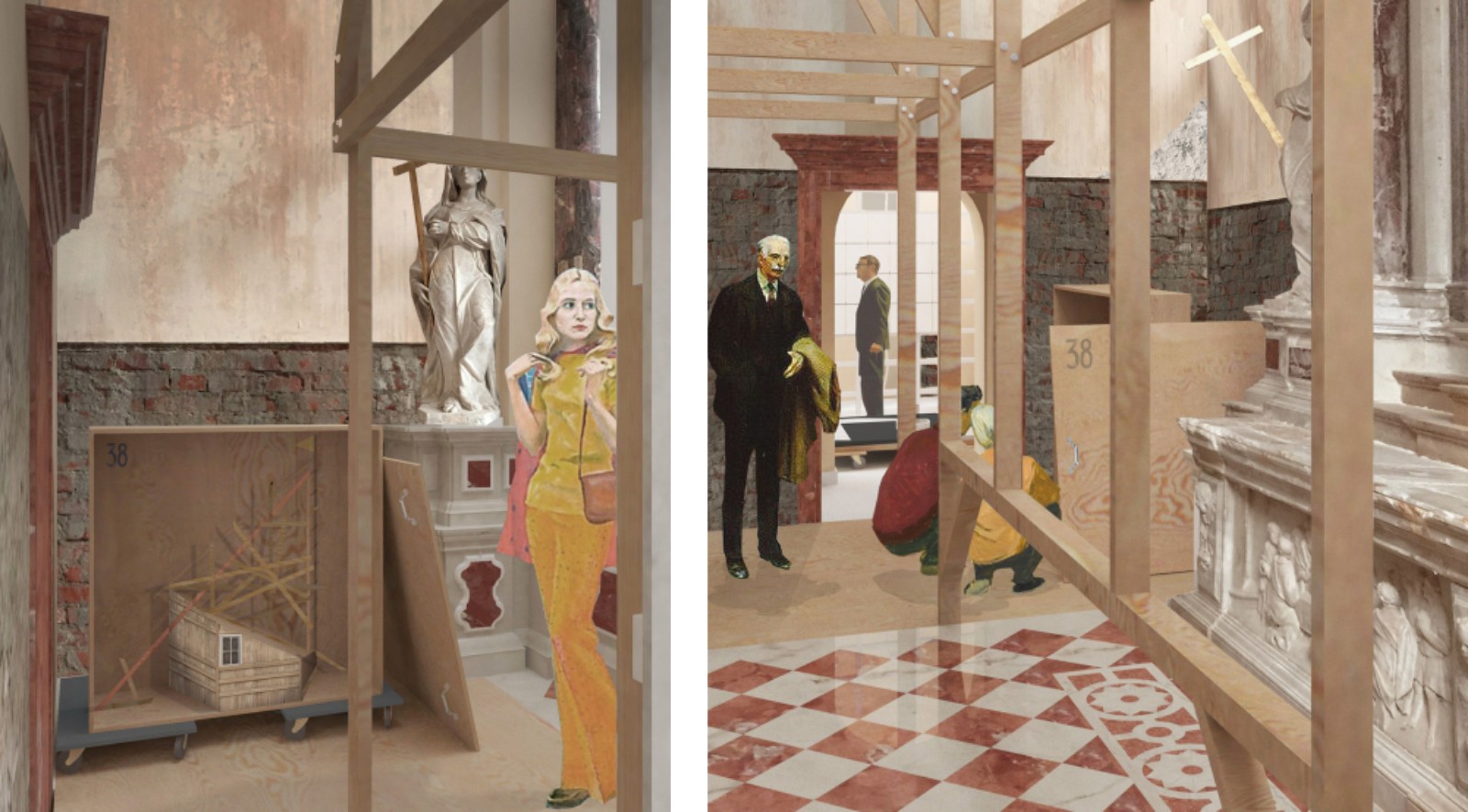
The Estonian Centre of Architecture presents the exhibition Weak Monument in the Pavilion of Estonia at the 16th International Architecture Exhibition – La Biennale di Venezia (May 26th – November 25th, 2018), entitled Freespace, and curated by Yvonne Farrell and Shelley McNamara.

Estonian Pavilion curators, Laura Linsi, Roland Reemaa and Tadeáš Říha, explore the spectrum between the explicit representation of the monument and the implicit politics of everyday architectures: from the triumphal column to the pavement beneath it, through all that is inbetween. The title itself – Weak Monument – is an oxymoron, a rhetorical device that offers fresh perspectives on how to recognize politics in any built form.

CURATORIAL
Weak Monument examines architecture’s capacity to be political, by juxtaposing two antithetical notions – weakness and monumentality. Monuments reside on the margin of the architectural discipline while directly embodying some of its most central qualities, such as relation to the site, delimitation of public space and capacity for representation. Monuments represent power explicitly, but not universally.

In Estonia, the notion of monument appears as a foreign intruder. Its presence is marginal, its tradition nonexistent and its form tormented by an apparent cultural displacement. Underscaled, skewed and displanted, half demolished and neglected, monuments stand in their oblivious surroundings as uncanny souvenirs brought from distant lands. The Estonian cultural specificity has been increasingly accordant with a wider contemporary distrust of the monument as a device of oppressive authority.

Weakness is at once a reflection and a proposition. It is full of contradictions, multiplicity and concealed meanings. In other words, everything that the classical concept of monument is not. It introduces strictly non-hierarchical structures, where politics is only implicit. It can be the pavement beneath the monument, the scaffold that allows for climbing the previously unclimbable; it can be the gap made explicit or the ruin that inspires the imagination.

EXHIBITION
Weak Monument invites visitors to expand their understanding of how, where and why architecture can be recognized as political. The former church of Santa Maria Ausiliatrice is overtaken by a pavement and a wall. A suburban interlocking pavement covers its coloured marbles, while a monument-like concrete wall divides the exhibition space in two. The everyday and the exceptional structures are forced to occupy the same baroque interior. A scene is formed, which invites the visitor to step onto, and through it.

The concrete wall, which initially appears grand and impenetrable, can be crossed. Behind it, its internal structure and richness of materials unfold. In this transitional space, a broad collection of weak monuments is unveiled. Estonian, as well as European examples, are showcased through existing and newly commissioned photographs, through drawings and models, and in the catalogue.

BOOK
In parallel to the exhibition, a book, entitled “Weak Monument – Architectures Beyond The Plinth” edited by the pavilion curators, has been published by Park Books, featuring guest essays by Tom Avermaete, Eik Hermann, Margrethe Troensegaard, Toomas Paaver and Klaus Platzgummer. In keeping with the Weak Monument working method, it presents an eclectic collection of architecture in paintings and personal snapshots, drawings and film stills, from known European archives and from small Estonian museums. Source by Weak Monument.

- Location: former church of Santa Maria Ausiliatrice, Venice, Italy
- Curators: Laura Linsi, Roland Reemaa, Tadeáš Říha
- Commissioner: Raul Järg (Estonian Centre of Architecture)
- Production: Eve Arpo, Maria Kristiin Peterson (Estonian Centre of Architecture)
- Collaborators: Tom Avermaete, Toomas Paaver, Klaus Platzgummer, Margrethe Troensegaard
- Editors: Eik Hermann, Sandra Mälk
- Main Partners: Cultural Endowment of Estonia, Estonian Ministry of Culture, Estonia’s centenary programme Estonia 100
- Sponsor: Ruukki
- Year: 2018
- Images: Courtesy of Weak Monument

